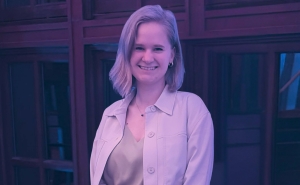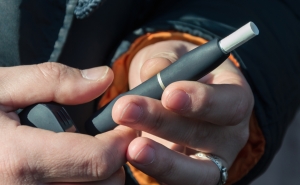Addressing the Opioid Overdose Crisis with Data

From 2018 to 2019, the U.S. saw a nearly 5% increase in drug overdose deaths—which have quadrupled since 1999.
As part of its response to the crisis, the CDC launched The Overdose Data to Action Project (OD2A) in 2019. The project aims to help 66 jurisdictions—including Maryland and Baltimore—collect the overdose data they need to inform effective prevention responses. Since December 2020, the Maryland Overdose Data Collaborative, a team of Bloomberg School researchers led by Renee Johnson, PhD, MPH, associate professor in the Department of Mental Health, and Ju Nyeong Park, PhD, MHS, assistant scientist in the Department of Health, Behavior and Society, has supported Maryland’s OD2A effort by using advanced data analysis methods to evaluate the state’s overdose programs.
The project launched at a critical time for Maryland, where opioid-related deaths were up 2.6% in the first quarter of 2020 compared to the same time period in 2019.
The MODC is focusing on “not just evaluating one program, but a whole sweep of initiatives,” says Johnson. They collect data from several agencies within the state such as the Environmental Health Bureau and the Opioid Operational Command Center, which the state can then use to improve, refine, or scale up its overdose response efforts.
For example, data trends can help identify if a health clinic is engaging in unsafe prescribing. “If we see data that shows all of these people getting opioids from a place in a manner that’s not consistent with safe prescribing, then [the clinic] could get closed,” says Johnson. Because clinic closures can put people who used these clinics at risk for transitioning to street drugs, the MODC can use data from results of previous clinic closures to put programs in place to mitigate adverse effects. Or options other than closing might be considered. The Maryland Department of Health, which regulates prescription drug monitoring, could instead send letters to individual providers to educate them on safe prescribing practices. In this case, Johnson’s team would evaluate whether those letters change providers’ behavior.
In their work with the Center for Harm Reduction Services, which oversees all syringe services programs across the state, MODC is first identifying all existing programs to measure their impact. For example, they are assessing whether distributing the overdose-reversal drug naloxone has an effect on fatal and non-fatal opioid overdoses in the areas where these services are offered.
COVID-19 has complicated this work. Johnson says that during the pandemic, many syringe services programs closed, naloxone distribution declined, and overdoses increased. The biggest challenge has been “distinguish[ing] what has happened because of COVID and what would have happened in the absence of COVID,” she says.
For now, all overdose data is grouped together, but Johnson and her team will soon have access to information that will detail whether people are using cocaine and meth, or synthetic opioids like fentanyl and carfentanil. They’re also on the lookout for xylazine—a veterinary drug commonly seen in street heroin—known to cause serious skin infections at injection sites. Data that comes from emergency departments will be shared with agencies like the Center for Harm Reduction Services so that they can educate staff and implement wound care training within their syringe services programs.
Johnson and the rest of the MODC team will work on this project for two years. But the effects of their work will last much longer. Their goal is to empower the agencies involved in Maryland’s opioid crisis response with the tools and data to follow MODC’s recommendations—even after their involvement ends. The purpose is to hand off the project.
“The most successful way, I think, to do this grant, is to eliminate the need for us [MODC] to be here, and get them set up to do this work for years to come,” Johnson says.
Grace Fernandez is a communications and marketing specialist in the Office of External Affairs at the Johns Hopkins Bloomberg School of Public Health.
Learn more about the MODC and the OD2A initiative here.




